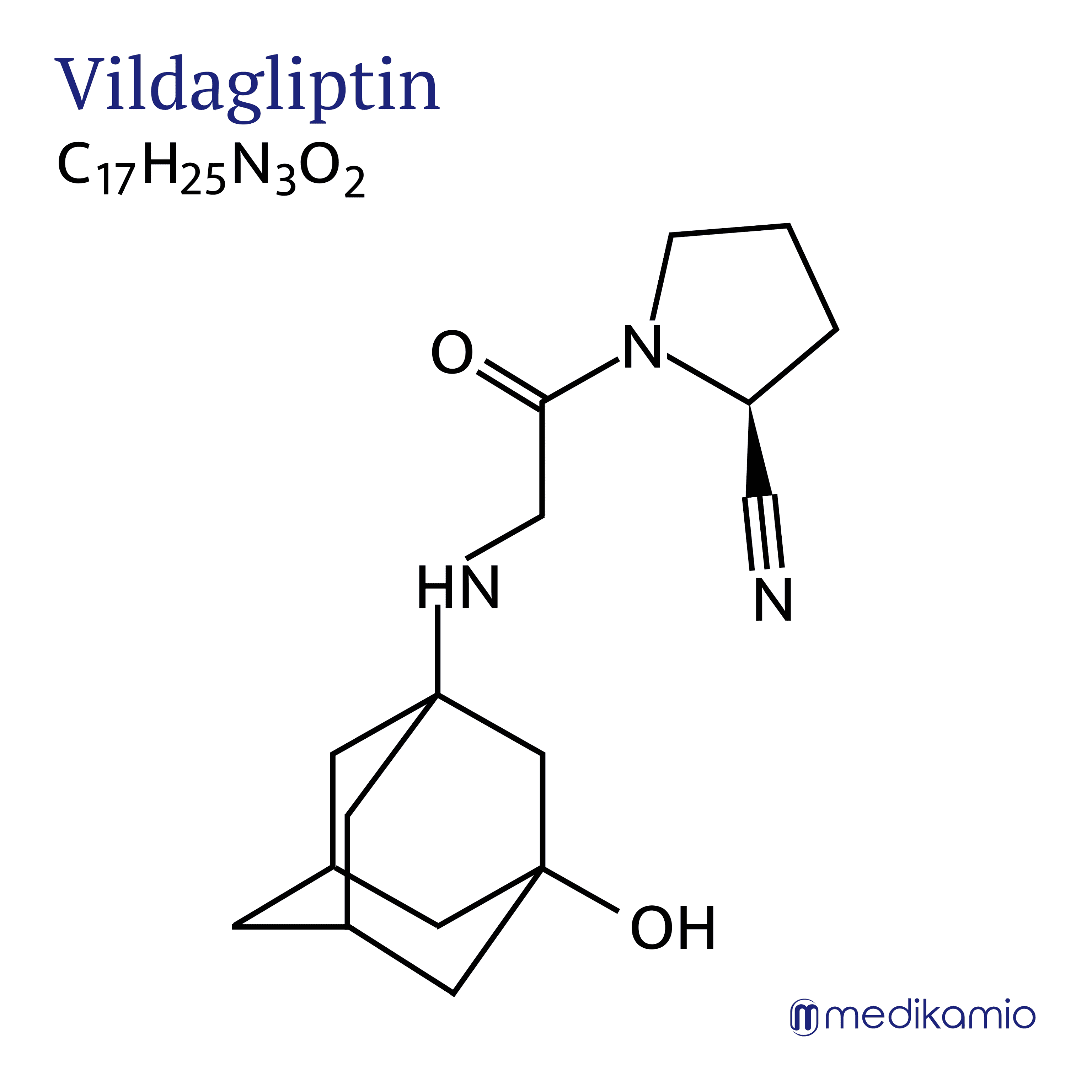Vildagliptin exerts its blood glucose-lowering effect by selectively inhibiting the enzyme dipeptidyl peptidase-4 (DPP-4), which rapidly cleaves and inactivates glucagon-like peptide-1 (GLP-1) and glucose-independent peptide (GIP) after their release from intestinal cells. Inhibition of DPP-4 significantly prolongs the half-life of GLP-1 and GIP, thereby increasing the levels of active circulating incretin hormones. Incretins are hormones produced by the intestine in response to food intake and stimulate the release of insulin from the pancreas. The increased release of insulin causes glucose to be absorbed from the blood into the cells, thus lowering blood sugar levels. In addition to its effect on insulin secretion, GLP-1 is also involved in promoting the new formation (neogenesis) and differentiation of islet cells and in attenuating cell death (apoptosis) of pancreatic beta cells. Incretin hormones also have effects outside the pancreas, for example on fat formation (lipogenesis) and heart muscle function.
The duration of DPP-4 inhibition by vildagliptin is dose-dependent. Vildagliptin lowers fasting and prandial blood glucose and HbA1c levels. It increases the glucose sensitivity of alpha and beta cells and increases glucose-dependent insulin secretion.
The bioavailability of vildagliptin, i.e. the percentage of the active substance available in the blood, is 85%. In the fasting state, vildagliptin is rapidly absorbed after oral administration. The half-life, i.e. the time the body needs to excrete half of the active substance, is 2-3 hours. The maximum plasma concentration (Cmax), i.e. the maximum concentration of the active substance in the blood plasma (liquid cell-free part of the blood), is reached 1 - 2 hours after administration. Food delays the time to 2.5 hours and reduces the maximum plasma concentration by 19 %, but has no effect on the overall exposure to the drug. The plasma protein binding of vildagliptin is 9.3 %. The majority of orally administered vildagliptin is metabolized via a non-cytochrome P450 enzyme-mediated metabolism. After oral administration, approximately 85% of the vildagliptin dose is excreted in the urine and approximately 15% of the dose was eliminated in the feces.



